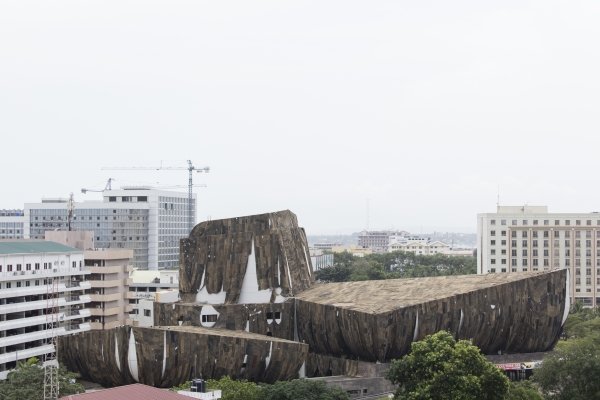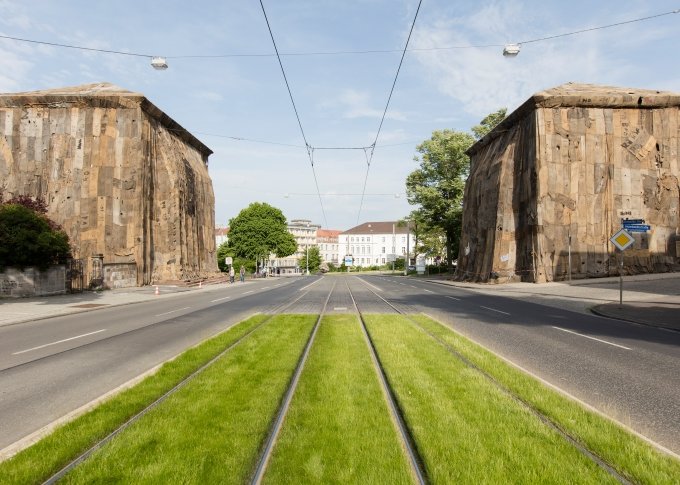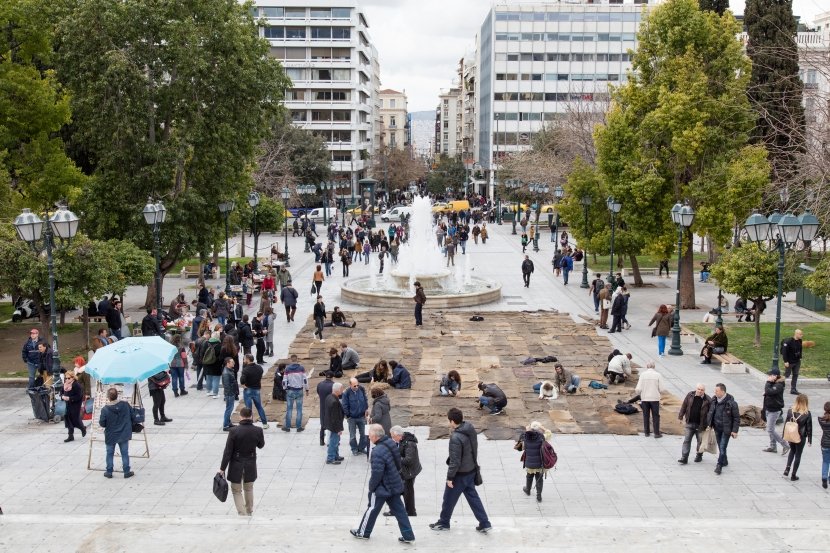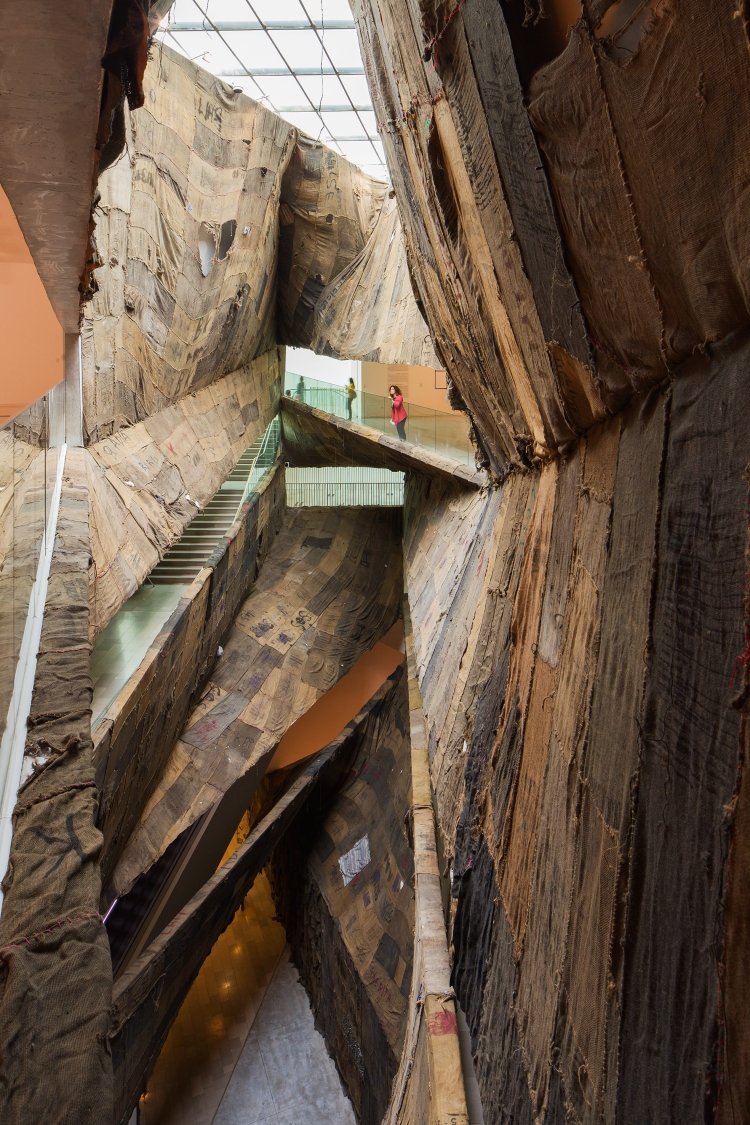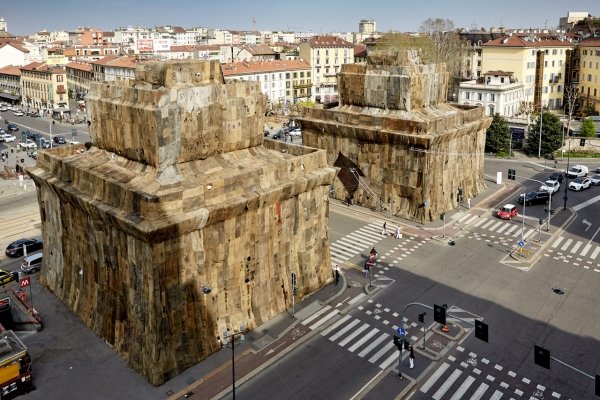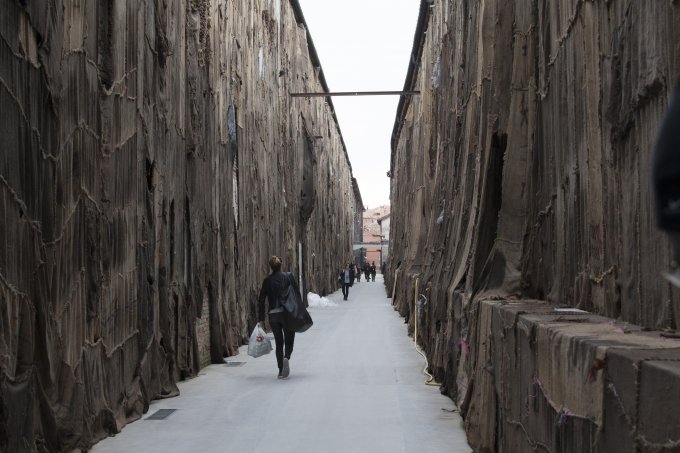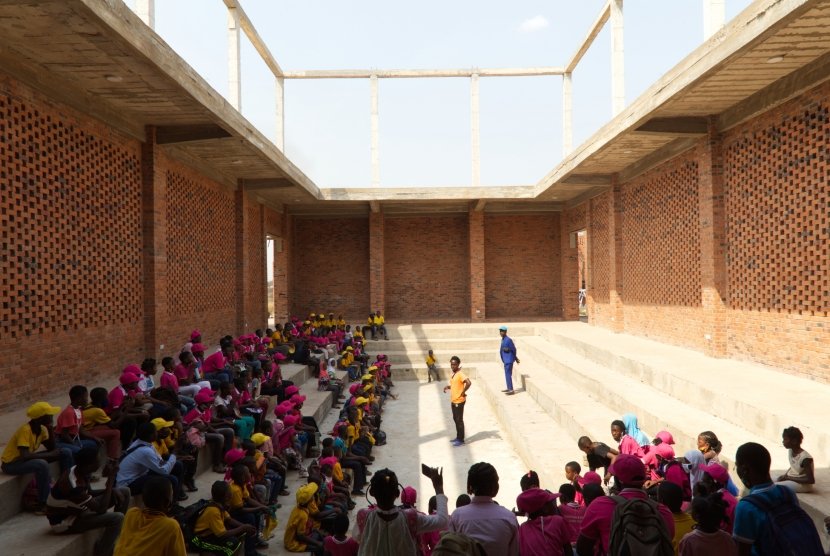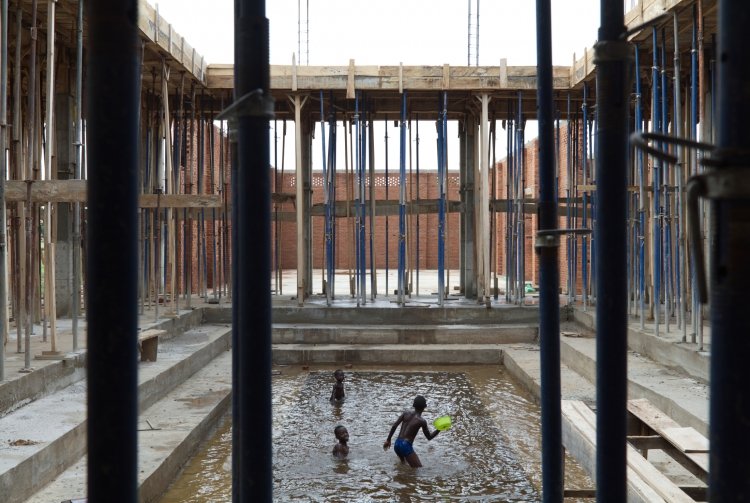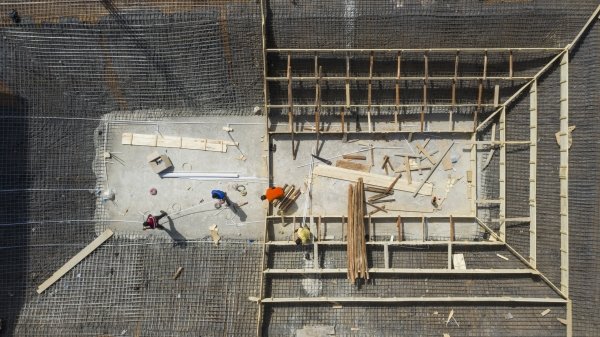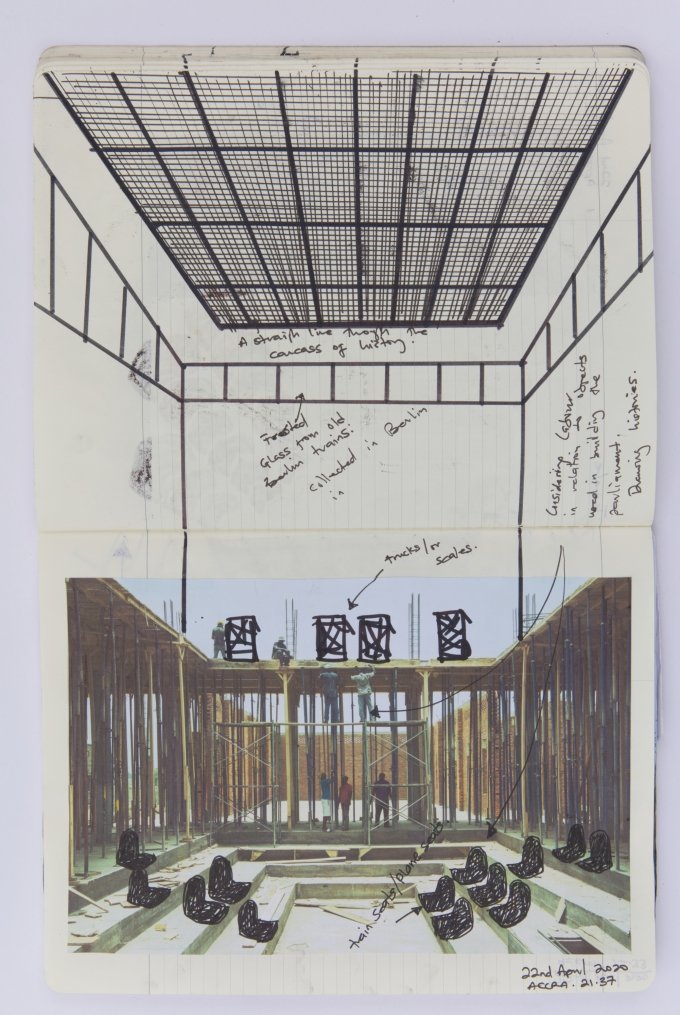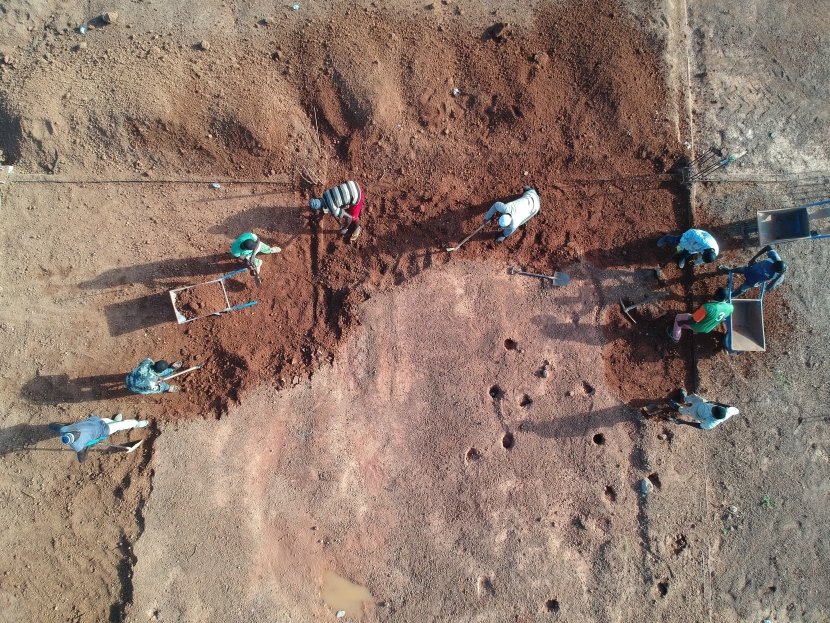IBRAHIM MAHAMA | Galerie Reiter
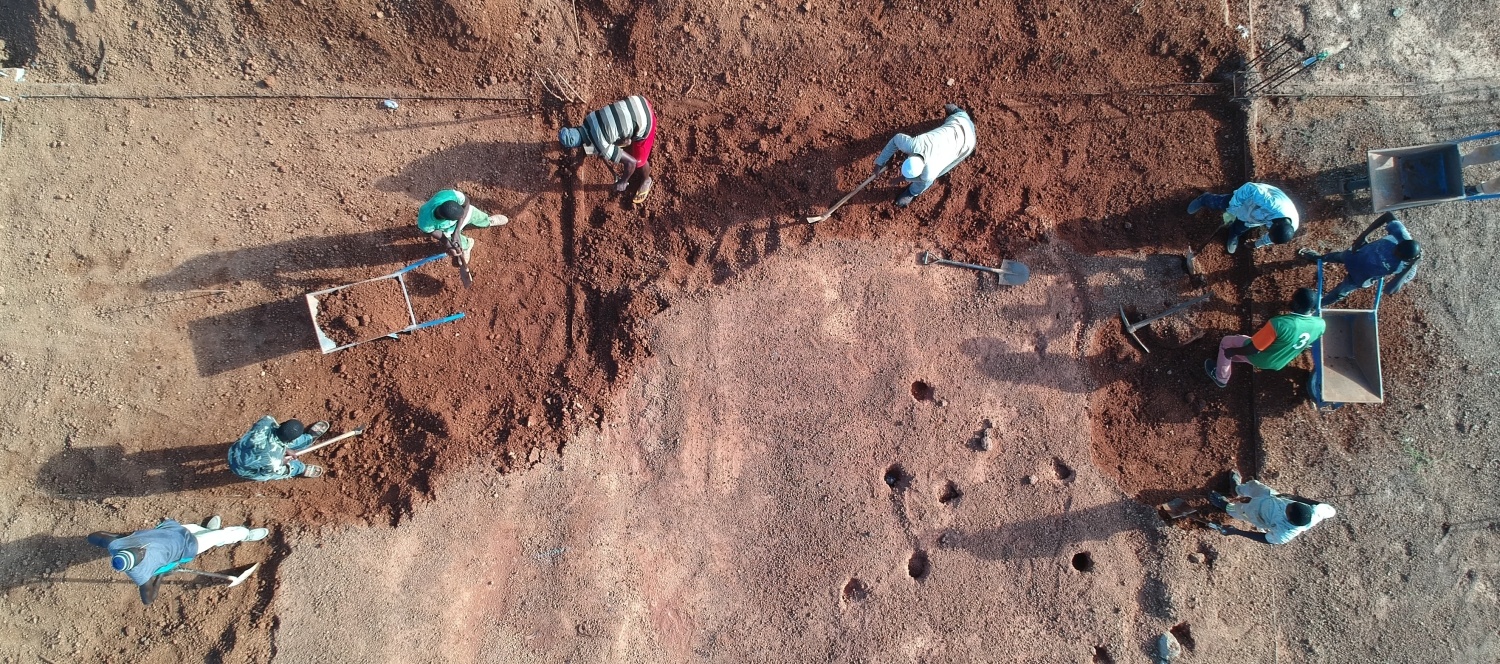
VANISHING POINTS. 2014 – 2020
Galerie Reiter, Leipzig
Beteiligte Künstler_innen: Ibrahim Mahama
Titel: VANISHING POINTS. 2014 - 2020
Datum: June 5 — September 11, 2021
Ausstellungstext
The old wheelbarrows, reminiscent of primeval turtle fossils, science fiction beetles from the 1920s or imaginative theatre helmets, are stacked one on top of the other. They could also be rusted, buckled bodies, hanging down on skeletal extremities. Canted into each other, wedged or tightly entangled. On one of them it says “For rent”, beneath it a telephone number. On another one can see embossing: “Germany", the country of origin. They are rusted, look bleached, they too have sweated. An indefinable color between yellow, orange, ochre, grey and brown remains. Their bodies are dried out. Together they form a dam of objects which keeps the viewer at a distance. Their essence appears hostile to a skin which could graze itself and become infected. Around them an earthy sand mixture from the region of Leipzig. Also dry. Also barren. It too should be kept out of a wound.
Ibrahim Mahama acquired the 100 wheelbarrows from workers in Ghana. He gave them new ones, they gave him the old. The long overdue replacement of their tools is either a simple, good barter trade, an anti-capitalist act, or action art. In the installation the wheelbarrows provide a reminder of the long history of their movements, of the physical labor, of the colonial history, the independence, the upswing, the problems, the construction ruins, the globalized trade in goods. In Ghana Ibrahim Mahama has initiated new building projects such as The Savannah Centre for Contemporary Art (SCCA) and the Red Clay Studio. Locations, not just for art exhibitions or cultural events, but also for schoolchildren who find new classrooms in airplanes. A number of the wheelbarrows also originate from these building sites.
Naturally this awakens associations with Joseph Beuys, his extended art concept and his social sculpture. Arte Povera, participative art and relational aesthetics are further categories from art history which can be applied to Mahama’s works. Beyond this, he demonstrates aesthetic qualities which are also valid, irrespective of the political core. Mahama’s outdoor works are simultaneously Land Art and monumental urban installations. The buildings shrouded in jute sacks are reminiscent of Christo and Jeanne Claude’s wrapped works, however, as a result of their special fold aesthetic the latter tend to appear graphical, while Mahama’s jute collages are more painterly. Their different colors, the chaotic compositional moments in the sewn together and their material reactions to different incidences of light, also make them into a gestural painting architecture.
That one position, like that of Ibrahim Mahama, proves itself on so many different levels, is rare. Mahama’s approach is, on the one side, highly aesthetic in the way he handles colors’, materials and forms, placing them in relation to the human body and its built environment, provoking a sensuous perception which repels or attracts the body. On the other side, his works demonstrate a constant feedback to the political, to Ghana and the active shaping of the future of his home country.
It is precisely this threshold which Mahama successfully negotiates in ever new ways. He picks the viewers up where they are, through aesthetic, physical sensations, triggered by the communicative power of his works. These initial (unpolitical) perceptions subsequently and relentlessly correlate with a content which, in his country and its colonial past, leads to the employment situation of many inhabitants and the narrations which are generated by Mahama’s materials. In order to generate this perceptual process Mahama does not need to dispense with his contemporary aesthetic language. On the contrary, he manages to operate with several formal languages in parallel, combining different types of storytelling in order to address heterogeneous groups of recipients. This proves successful because his works are simultaneously regional and global, the former without appearing shallow or arbitrary, the latter without making too many concessions.
PARNASS Special
Aktuell sind Werke von Ibrahim Mahama als Teil der Vienna Biennale in Wien zu sehen, lesen Sie mehr dazu in unserem Special:


